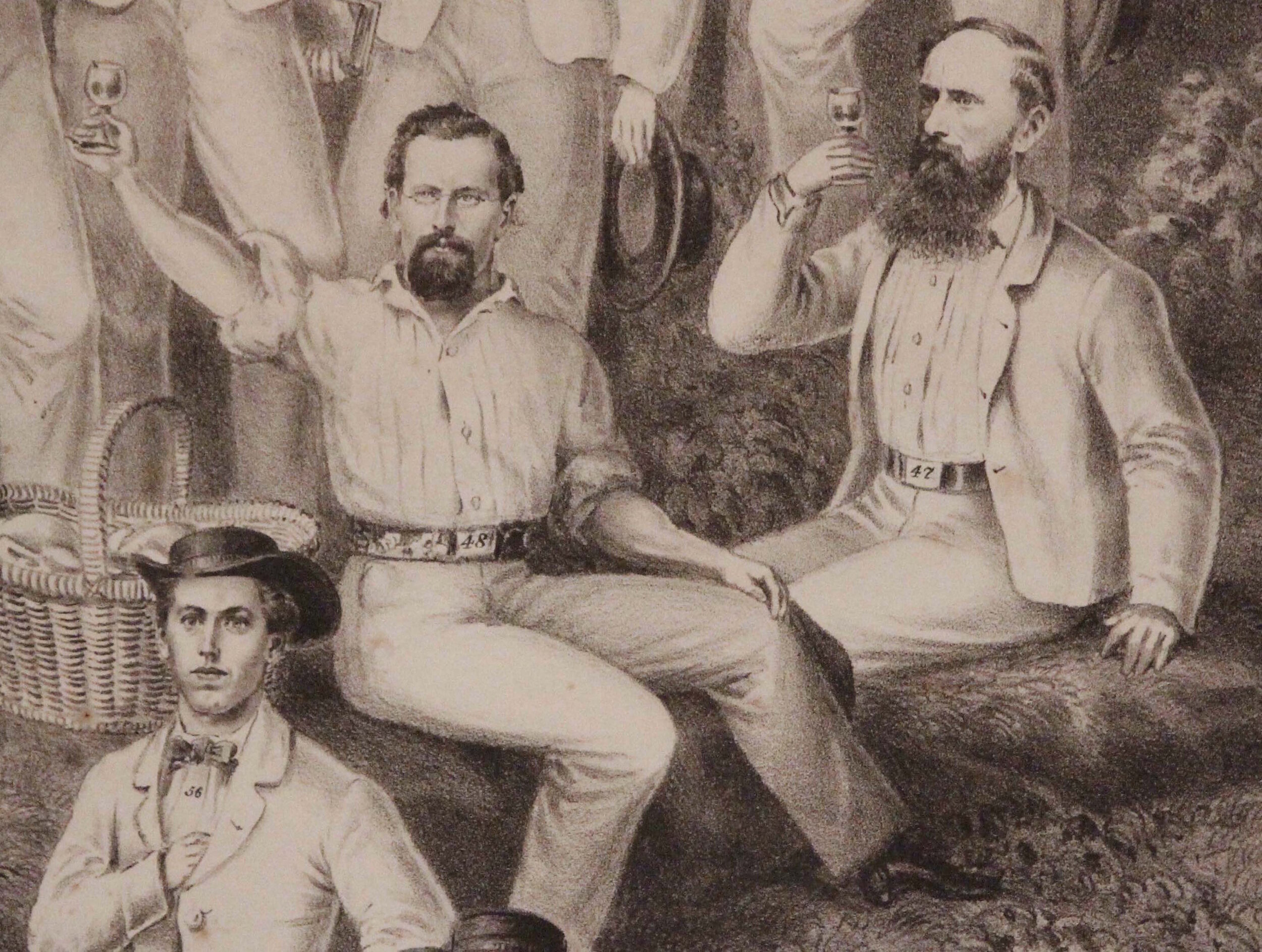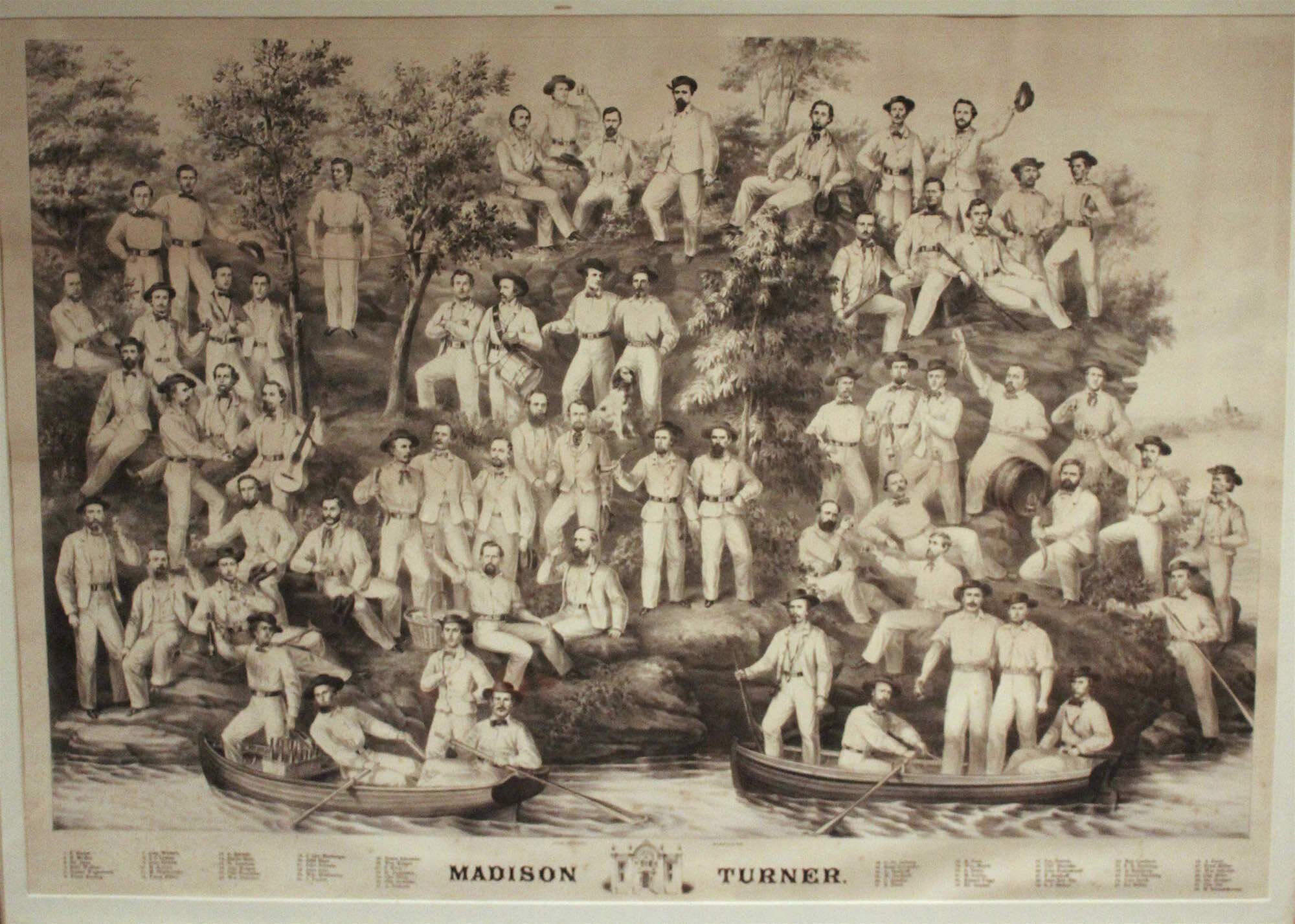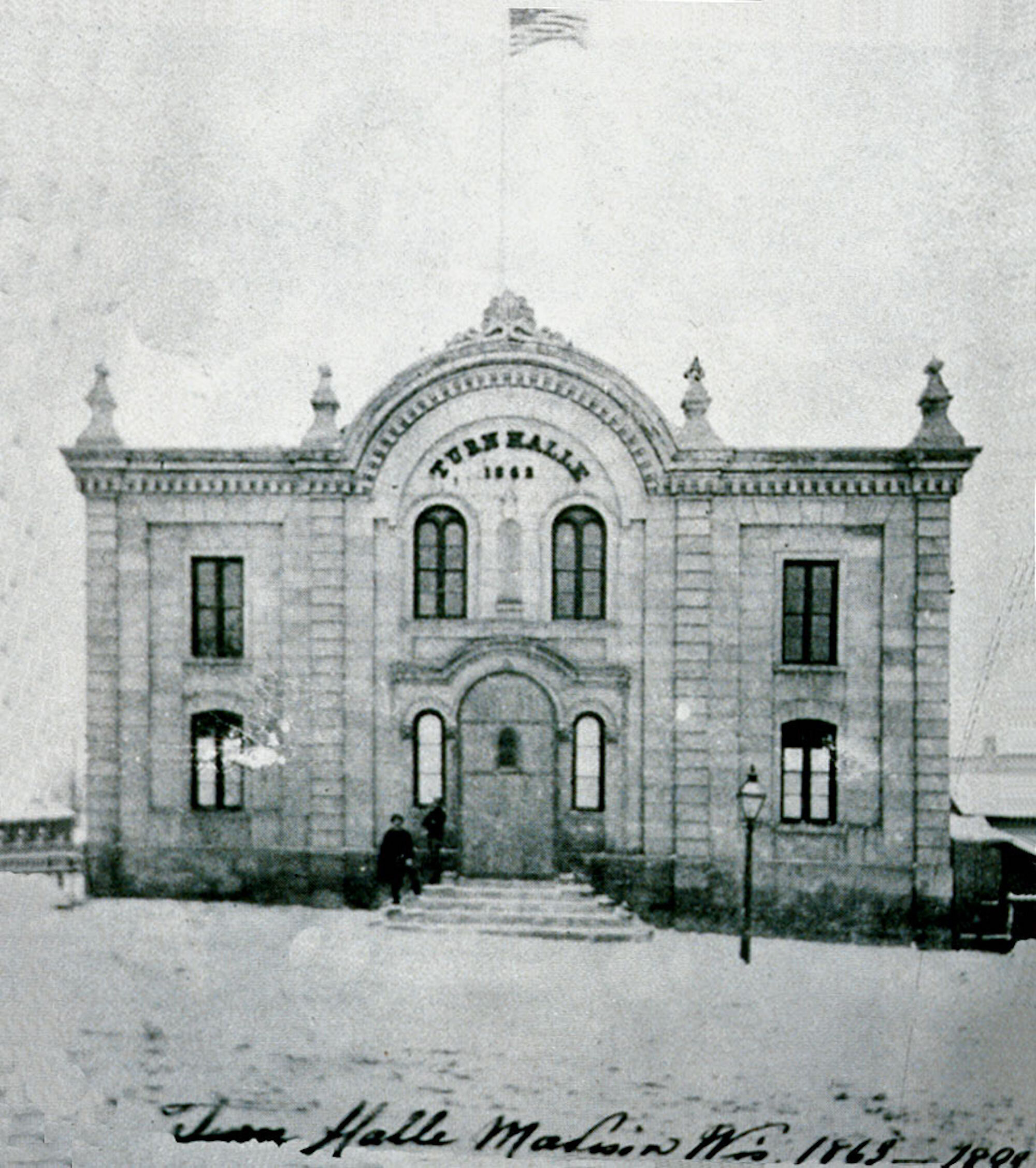Germans in Madison
By Michael Bridgeman
Germans played an important role in Madison’s early history. Their stories are highlighted in one of the Madison Trust’s historic architecture walking tours which are slated to begin May 28.
Built in 1873-74, the home of John George and Lucia Ott at 754 Jenifer St. was reportedly made from bricks made at an east-side brickyard owned by Ott. (Photo: Vicki Siekert) Click to enlarge.
In 1850, John George Ott arrived in Madison at age 13 to work as a clerk for his older brothers—J. Conrad and J. James—who had migrated a year earlier and established themselves as merchants. The Otts came from Switzerland and joined a growing German-speaking community in Madison.
The fine house that Ott and his wife Lucia (who was from north-central Germany) built for themselves in 1873 is part of the Third Lake Ridge West tour that returns to the Madison Trust’s offerings this season. The tour highlights a neighborhood mostly associated with German families—Ott, Breitenbach, Sauthoff, and Klose among them.
Though “Yankees” from New England and upstate New York dominated Madison’s early history, it didn’t take long for German immigrants to become a force in their own right. The term German-speakers may be more useful since immigrants ventured from a wide geographic area before and after the German Empire was established in 1871.
Ott promoted a wide range of merchandise in this advertisement from the Sept. 13, 1878 Wisconsin State Journal. (Image: Newspapers.com) Click to view full image.
Social, economic and political changes in central Europe made Wisconsin an attractive destination and Germans were the largest immigrant group to settle in Wisconsin in the 19th century, especially in Milwaukee and the counties along and near Lake Michigan. Madison got its share of “Germans,” too. Madison historian David Mollenhoff notes that by 1880 those of German heritage (as defined by their birthplace or that of their father) comprised 45 percent of Madison’s population of 10,324 persons.
The Biederstadt-Breitenbach Grocery building dates to 1874. The Breitenbach family lived above the store for 60 years. (Photo: Vicki Siekert) Click to enlarge.
Ott became a merchant who engaged in other businesses including insurance and real estate. His business address was “downtown,” but Williamson Street had a distinct commercial district with many German-named proprietors. For example, in 1850 Charles Hinrichs built a small building at the corner of Williamson and Paterson which was later purchased by Charles Biederstadt for a grocery store. When the frame structure burned Biederstadt erected a brick building—part of the Third Lake Ridge West tour—and later sold the business to George Breitenbach’s family who remained there until 1960.
This birds’-eye view of the Fauerbach Brewery dates from 1905. The last buildings were demolished in 1967 and the site was developed as the Fauerbach condominium in 1980. (Image: fauerbachbrewery.com) Click to enlarge.
Other commercial enterprises were operated by families named Heitkamp, Schlundt and, most famously, Fauerbach. In the late 19th century all five of Madison’s breweries were owned by men with German surnames. The Fauerbach Brewery stood at the corner of Williamson Street and Blount Street.
Like other leading citizens of his day Ott was busy and engaged, serving on the city council and county board, and participating in civic and fraternal organizations. He was a founding member (in 1855) of the Madison Turnverein, a movement that originated in Germany that emphasized physical exercise. The Turnverein was also a social, political and cultural organization that met at the Turn Halle (or Turner Hall) on Butler Street where it provided all those activities for Madison’s large German community.



*On a mobile phone, to view the image description for the above three photos you must be in landscape mode.
When John George Ott died in 1914 at the age of 87, the Wisconsin State Journal noted that he was “the last surviving charter member of the Madison Turnverein.” Survivors included his son Harlow, owner of Ott’s Pharmacy on the Capitol Square. He and his wife Isabelle lived just down the street from the house Harlow’s parents built in 1873.
The Harlow and Isabelle Ott house at Jenifer and Spaight Streets dates to 1897 and is part of the Third Lake Ridge West tour. It was designed by Madison architects Claude & Starck. (Photo: Vicki Siekert) Click to enlarge.
. . .
There is much more to the story of Germans in Madison.
Both David V. Mollenhoff’s Madison: A History of the Formative Years (2nd edition) and Stuart D. Levitan’s Madison: The Illustrated Sesquicentennial History, Vol. 1 are rich sources of information and stories about Madison’s early German community.
For an overview of immigration to Wisconsin by Germans (and others) Wisconsin’s Past and Present: A Historical Atlas by the Wisconsin Cartographer’s Guild is an invaluable resource.
